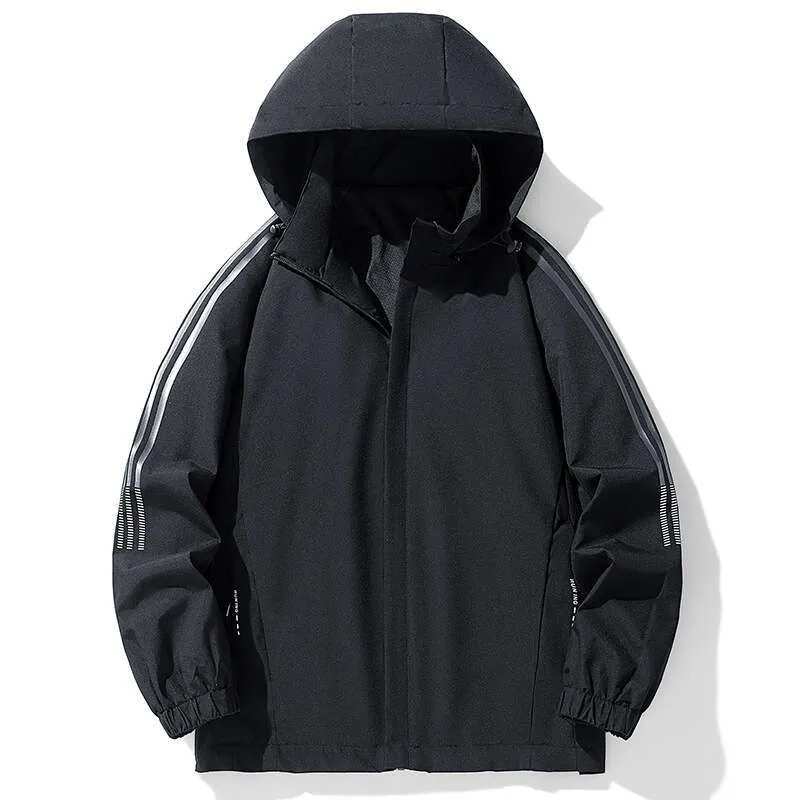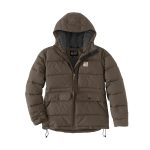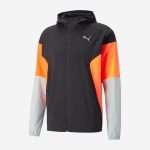What is a Running Jacket?
Is a running jacket necessary? A running jacket is a garment designed for runners. It aims to protect and enhance performance in various weather conditions. Unlike regular jackets, running jackets boast special features. These may include wind and water resistance, breathability, and lightweight materials. They fit snugly to prevent drag and often include reflective elements for safety. Some have pockets for essentials and ventilation systems to regulate body temperature. A running jacket is not just a piece of clothing. It’s a functional tool that helps runners maintain comfort and focus during their workouts. By choosing the right jacket, you can run in rain, wind, and even colder temperatures.
Key Characteristics of a Running Jacket
Lightweight Construction
- Running jackets are typically made from lightweight fabrics such as polyester, nylon, or spandex blends. This ensures they don’t weigh you down or restrict movement during your run.
- Their minimalistic design prioritizes mobility, making them easy to wear without feeling bulky.
Weather Protection
- Many running jackets are water-resistant or waterproof, protecting you from rain and snow. High-performance models often feature DWR (Durable Water Repellent) coatings to repel moisture.
- They are also windproof, shielding you from chilly gusts that can make outdoor runs uncomfortable.
Breathability
- Running generates heat and sweat, so these jackets are engineered with breathable fabrics and ventilation systems. Features like mesh panels, underarm zippers, or perforated sections allow excess heat to escape while keeping you dry.
Moisture-Wicking Properties
- The fabrics used in running jackets are often treated to be moisture-wicking, pulling sweat away from your skin to keep you comfortable and prevent chills caused by damp clothing.
Reflective Details
- For safety during low-light conditions, most running jackets include reflective strips, logos, or patterns that enhance visibility to drivers and cyclists.
Slim Fit and Ergonomic Design
- Running jackets are designed with a close-fitting, ergonomic cut that reduces drag and prevents flapping in the wind. Stretchy materials ensure freedom of movement without restriction.
Types of Running Jackets
Lightweight Windbreakers
- Ideal for mild weather or cool mornings, these jackets focus on blocking wind while remaining ultra-lightweight and packable. They’re perfect for runners who want minimal coverage but still need protection from breezy conditions.
Waterproof Rain Jackets
- Designed for wet weather, these jackets use fully waterproof materials and sealed seams to keep you dry during heavy rain. They often come with adjustable hoods and cuffs for added protection.
Insulated Running Jackets
- For colder temperatures, insulated jackets provide an extra layer of warmth. These are typically filled with synthetic insulation or fleece linings to trap heat without adding bulk.
Softshell Jackets
- Softshell jackets combine water resistance, wind protection, and stretchiness in a single garment. They’re versatile enough for cooler weather runs and offer more flexibility than traditional hardshell jackets.
Hybrid Jackets
- Hybrid designs incorporate multiple technologies into one jacket, such as combining breathable mesh panels with windproof overlays. These adapt well to changing weather conditions and varying levels of exertion.
A running jacket is more than just a piece of outerwear—it’s an essential tool for any runner looking to conquer diverse weather conditions while staying comfortable and safe. With advancements in fabric technology and thoughtful design features, modern running jackets deliver unparalleled performance without compromising on style or convenience.
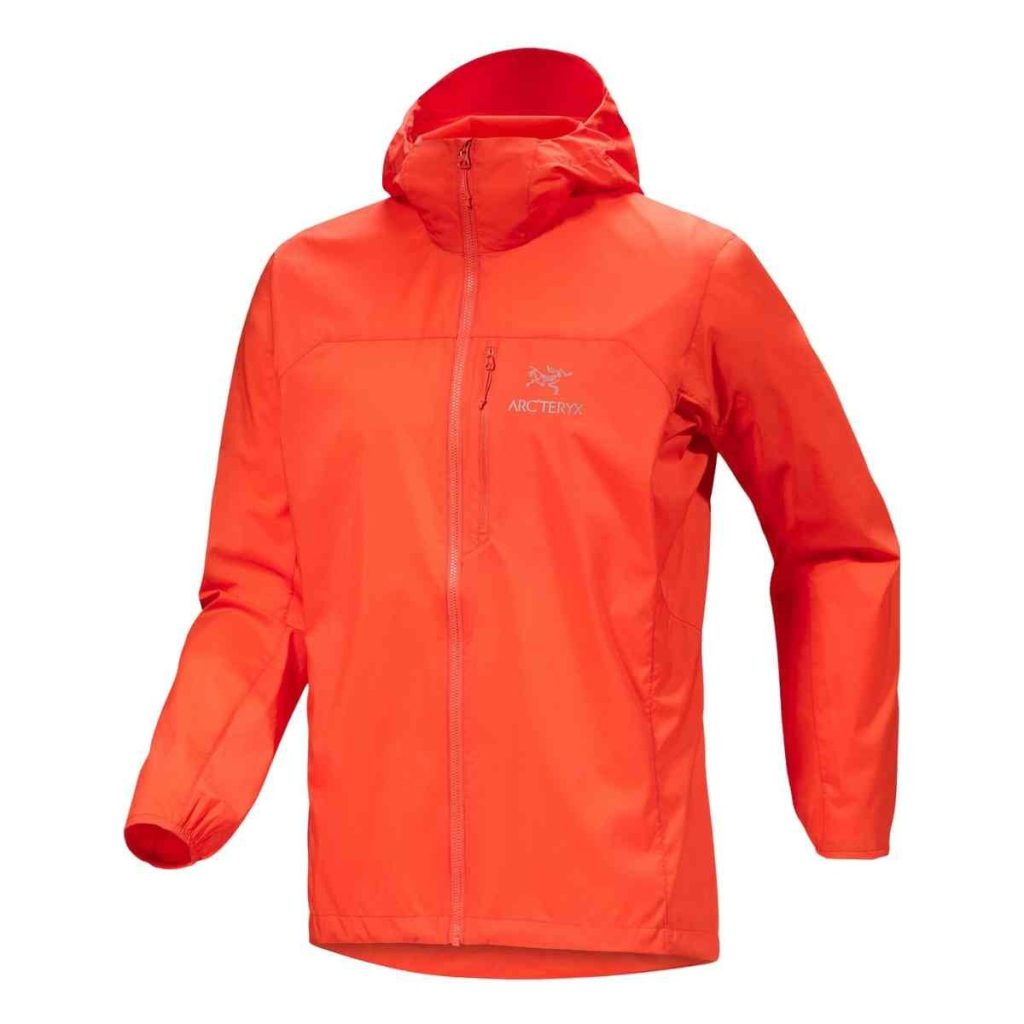
The Role of a Running Jacket in Performance
A running jacket does more than cover you up. It’s a performance enhancer for runners. Let’s break down how it impacts your runs.
Protection Against Elements
The primary role of a running jacket is to shield you from weather conditions. Windbreakers reduce the cooling effect of the breeze on your skin. Water-resistant jackets keep you dry in light rain. This lets you focus on your stride, not the sky.
Regulating Body Temperature
Running jackets are not too thick or thin. They keep you warm without overheating. They ‘breathe’ to let sweat escape, keeping you dry and cozy.
Reducing Drag
A well-fitted jacket cuts down air resistance. This helps keep your energy focused on running, not on fighting the wind.
Safety Features
Reflective elements in running jackets make you visible. They’re important for early morning or evening runs.
Comfort and Convenience
Pockets in your jacket can hold keys or energy gels. You stay hands-free and prepared. The right jacket helps you run without distractions. It supports your performance by managing comfort and practical needs.
Key Features to Look For in a Running Jacket
When shopping for a running jacket, it’s important to prioritize features that enhance performance, comfort, and protection from the elements. Here are the key features to look for:
1. Weather Resistance
- Waterproofing: Look for jackets made with waterproof or water-resistant materials if you run in rainy conditions. Fully taped seams are an added bonus for maximum protection.
- Windproof: A windproof layer is crucial for cold or windy days, helping to block chilly gusts while you run.
- Breathability: Even in wet or cold weather, you’ll sweat, so opt for jackets with breathable fabrics (like Gore-Tex or similar membranes) that allow moisture vapor to escape, keeping you dry on the inside.
2. Lightweight Design
- Running jackets should be lightweight to avoid weighing you down during your workout. Bulky jackets can restrict movement and make you feel overheated.
- Packability is also a plus; some jackets can fold into their own pocket, making them easy to carry when not in use.
3. Ventilation
- Mesh Panels: Strategically placed mesh panels under the arms or along the back help with airflow and cooling, especially during intense runs.
- Zippered Vents: Some jackets come with zippered vents that can be opened or closed depending on how much airflow you need.
4. Reflective Elements
- If you run early in the morning, late at night, or in low-light conditions, reflective details are essential for visibility and safety. Look for jackets with reflective logos, strips, or patterns that enhance your visibility to drivers and cyclists.
5. Fit and Mobility
- Ergonomic Design: A well-fitted jacket should allow for full range of motion without feeling restrictive. Look for articulated sleeves or stretchy materials that move with your body.
- Adjustable Features: Adjustable hoods, cuffs, and hemlines can help you customize the fit and provide better protection against the elements.
6. Temperature Regulation
- Insulation: For colder climates, consider jackets with light insulation (such as fleece lining or synthetic fill) to keep you warm without overheating.
- Layering Capability: In milder conditions, a lightweight shell that can be layered over other clothing is ideal. Look for a jacket that works well with base layers for added warmth.
7. Storage Options
- Pockets: Secure zippered pockets are useful for storing small essentials like keys, energy gels, or your phone. Some jackets even have internal pockets or chest pockets for added security.
- Media Ports: If you listen to music while running, look for jackets with headphone ports or loops to keep your cords organized.
8. Durability
- Running jackets should be durable enough to withstand regular use and exposure to the elements. Reinforced stitching and high-quality materials will ensure longevity.
9. Hood Design
- A hood can be crucial for protecting your head and neck from rain or wind, but it should be designed in a way that doesn’t obstruct your vision or become a nuisance. Look for hoods that are adjustable, snug-fitting, and don’t flop around when running.
10. UV Protection
- If you run in sunny conditions, a jacket with built-in UV protection (UPF-rated fabric) can help shield your skin from harmful sun rays.
By considering these features, you can find a running jacket that offers the right balance of protection, comfort, and functionality for your specific needs and running environment.
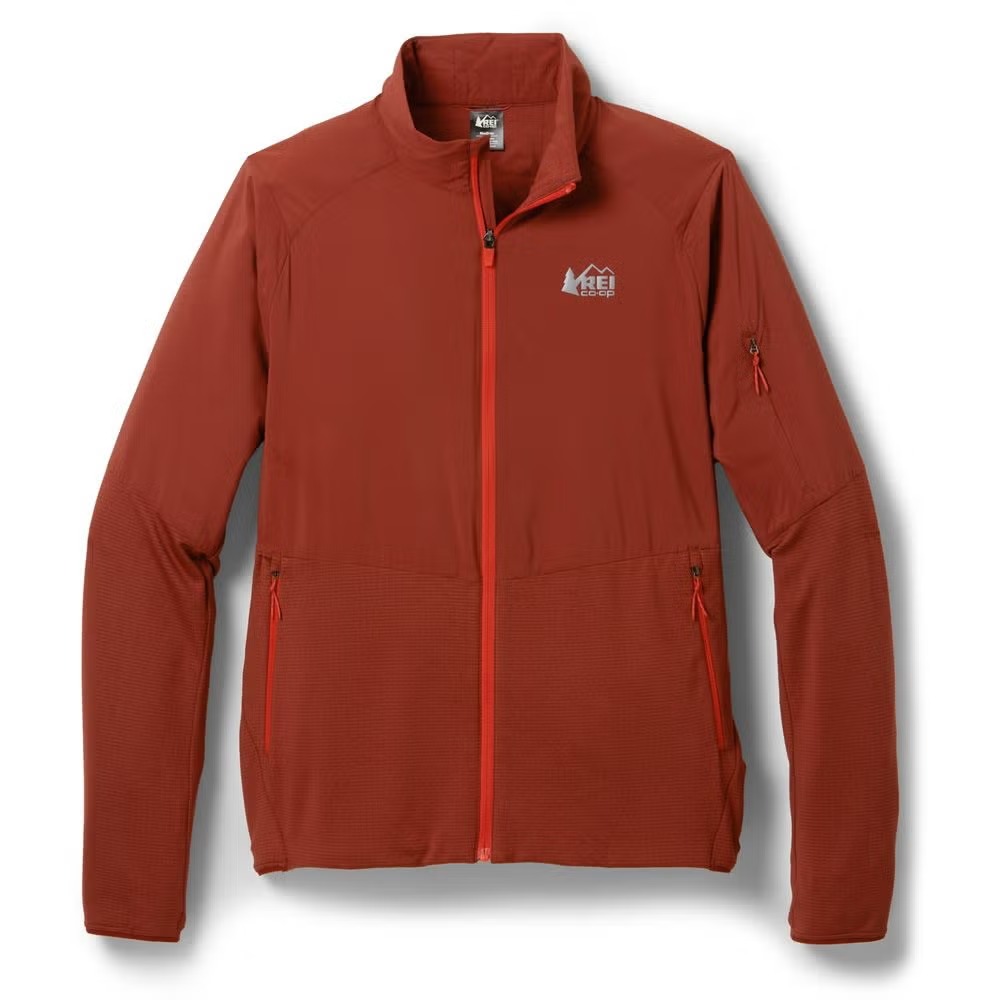
Different Types of Running Jackets
When considering if a running jacket is necessary, be aware there are several types designed for specific conditions and runners’ needs. Here’s a look at the common varieties you’ll find in stores.
Windbreakers
Windbreakers are lightweight and designed to protect against wind. They’re ideal for breezy days and often have some water resistance.
Rain Jackets
Made for wet conditions, rain jackets are waterproof and have sealed seams. They are heavier than windbreakers but keep you dry during downpours.
Thermal Jackets
Thermal jackets provide insulation for cold weather running. They retain body heat and usually have a water-resistant outer layer.
Softshell Jackets
Softshell jackets offer a balance between warmth and breathability. They are water-resistant and stretchy, providing good movement.
Reflective Jackets
Each of these types has features the others might not offer, providing options based on the weather and individual preference. Choosing the right kind of jacket will contribute to the comfort and success of your runs.
How to Choose the Right Running Jacket
Choosing the right running jacket is essential for comfort, performance, and protection during your runs. Here are the key factors to consider when selecting the perfect running jacket:
1. Weather Conditions
- Rain: Look for a waterproof or water-resistant jacket if you frequently run in wet weather. Ensure it has sealed seams to prevent water from seeping through.
- Wind: A windproof jacket is crucial for cold or windy conditions. It should block gusts while still allowing breathability.
- Cold Temperatures: For colder weather, opt for an insulated or thermal jacket that provides warmth without being too bulky.
- Mild Weather: In warmer or milder conditions, choose a lightweight, breathable jacket that offers ventilation.
2. Material
- Breathability: Look for jackets made from moisture-wicking materials like polyester or nylon blends that allow sweat to evaporate and keep you dry.
- Water Resistance: Materials like Gore-Tex or similar fabrics offer excellent waterproofing while remaining breathable.
- Stretch: Jackets with some elasticity (e.g., spandex) provide better mobility and comfort during runs.
- Durability: Ensure the fabric is durable enough to withstand frequent use and washing without losing its protective qualities.
3. Fit
- Snug but Not Restrictive: The jacket should fit snugly to avoid flapping in the wind but not so tight that it restricts movement. Consider whether you’ll be layering underneath (e.g., a long-sleeve shirt) and choose accordingly.
- Articulated Seams: Some jackets have seams designed to follow the natural movement of your body, which can enhance comfort during runs.
- Adjustable Features: Look for adjustable cuffs, hems, or hoods that allow you to customize the fit and seal out cold air or moisture.
4. Weight and Packability
- Lightweight: A good running jacket should be lightweight enough to not weigh you down during your run.
- Packable: Many running jackets are designed to be easily folded into a small pouch or pocket, making them convenient to carry when the weather changes.
5. Ventilation
- Mesh Panels: Some jackets come with mesh panels or vents under the arms or along the back to improve airflow and prevent overheating.
- Zippered Vents: Full-length or half-zip designs allow you to regulate temperature by opening or closing the zipper as needed.
6. Reflectivity and Visibility
- Reflective Details: If you run in low-light conditions, look for jackets with reflective strips or logos that increase visibility to drivers and cyclists.
- Bright Colors: Opt for bright or neon colors (e.g., yellow, orange, or lime green) to stand out during early morning or evening runs.
7. Hood
- Detachable or Adjustable Hood: A hood can be useful in rain or cold weather, but make sure it’s adjustable so it doesn’t obstruct your vision or flap around during your run.
- Brimmed Hood: Some hoods have a built-in brim to help shield your face from rain or sun.
8. Pockets
- Storage: Look for jackets with secure zippered pockets to store essentials like keys, energy gels, or your phone. Some jackets even have media ports for headphone cables.
- Chest Pockets: Chest pockets are often more accessible than hip pockets, especially if you’re wearing a running belt.
9. Durability and Care
- Washability: Check the care instructions to ensure the jacket is easy to clean. Most technical running jackets can be machine washed, but avoid using fabric softeners, as they can degrade the material’s performance.
- Longevity: Invest in a high-quality jacket that will last multiple seasons. Cheaper options may lose their water resistance or breathability over time.
10. Price
- Budget: Running jackets can range from $50 to several hundred dollars. Determine your budget, but remember that investing in a higher-quality jacket can pay off in terms of durability and performance.
- Value vs. Cost: While cheaper jackets may save money upfront, they might not offer the same level of protection, breathability, or longevity as more expensive options.
11. Sustainability
- Eco-Friendly Options: Some brands now offer jackets made from recycled materials or with environmentally friendly manufacturing processes. If sustainability is important to you, look for these options.
When choosing the right running jacket, prioritize weather protection, breathability, and fit. Consider the specific conditions you’ll be running in and select a jacket that balances functionality with comfort. By keeping these factors in mind, you’ll be able to find a jacket that enhances your running experience and keeps you protected, no matter the weather.
Weather Conditions and Jacket Selection
When running, weather can change quickly. A good running jacket helps you adapt with ease. Here is how to match jackets to common weather conditions:
Windy Days
On windy days, choose windbreakers. They are light and shield you from brisk gusts. Look for jackets with a close fit to reduce drag.
Rainy Weather
For rainy runs, rain jackets are best. Pick waterproof jackets with sealed seams. These will keep you dry no matter how heavy the rain.
Cold Climates
In cold weather, reach for thermal jackets. They trap heat and may repel water too. Make sure it’s not too bulky to allow free movement.
Low Light Situations
Choosing the right jacket for the weather is crucial. It ensures comfort, protection, and continuous training. Always check the forecast before heading out.
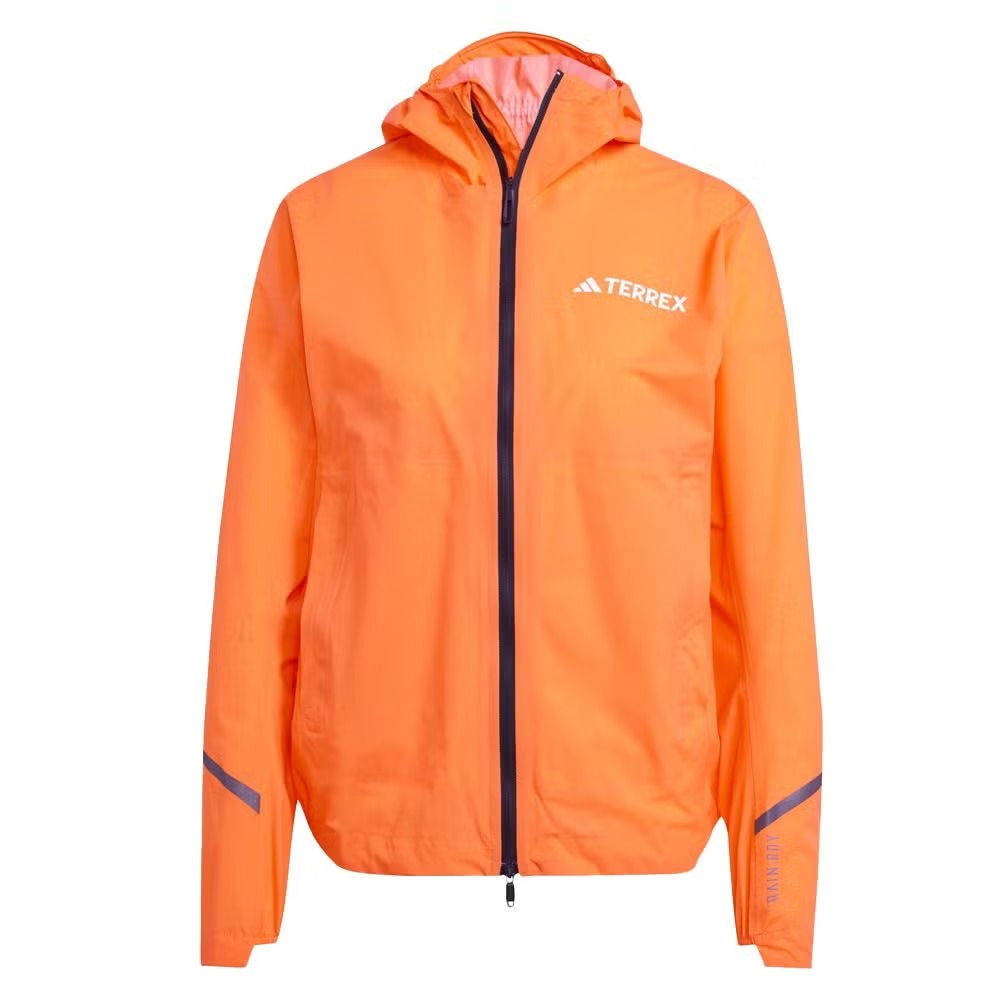
Caring for Your Running Jacket
Proper care and maintenance of your running jacket are essential to ensure it continues to perform well, remain durable, and stay comfortable over time. Different jackets have unique materials and features that require specific care. Here are some simple steps to help you properly care for your running jacket:
Read the Care Label
- Always start by checking the care label inside your jacket. The manufacturer will provide specific washing and care instructions based on the materials used (e.g., Gore-Tex, nylon, polyester). Following these guidelines is crucial to avoid damaging the fabric or its protective coatings.
Wash Regularly but Not Too Often
- When to Wash: It’s important to wash your jacket regularly, especially after runs in wet, muddy, or sweaty conditions. Dirt, sweat, and oils can break down the fabric’s water-resistant properties if left untreated.
- How Often: While regular cleaning is necessary, avoid over-washing your jacket. Washing too frequently can wear out the material faster, especially with harsh detergents or high-heat drying.
Use the Right Detergent
- Mild Detergent: Use a mild detergent or one specifically designed for technical fabrics. Avoid using regular detergents, fabric softeners, or bleach, as they can damage the jacket’s water-repellent coating and reduce breathability.
- Special Cleaners: Some brands offer specialized cleaning products for outdoor gear, such as Nikwax Tech Wash or Grangers Performance Wash, which are ideal for maintaining the performance of waterproof and breathable fabrics.
Washing Machine vs. Hand Wash
- Machine Washing:
- If machine washing is recommended, use a gentle cycle with cold or lukewarm water.
- Close all zippers, Velcro straps, and pockets to prevent snagging or damage during the wash.
- Turn the jacket inside out to protect the outer layer from abrasion.
- Hand Washing:
- For delicate or heavily insulated jackets, hand washing may be preferable. Soak the jacket in a sink or basin with cold water and a small amount of mild detergent. Gently agitate the water and rinse thoroughly.
Drying Properly
- Air Dry: Many jackets should be air-dried. Hang the jacket on a clothesline or lay it flat to dry. Avoid direct sunlight, as prolonged exposure can degrade the fabric.
- Tumble Dry (if allowed): Some jackets can be tumble dried on a low heat setting. Check the care label first. Adding a couple of clean tennis balls or dryer balls can help fluff up insulation in down or synthetic-filled jackets.
- Reapplying Water Repellency: After washing, you may need to reactivate the Durable Water Repellent (DWR) coating. You can do this by tumble drying the jacket on low heat for about 20 minutes or ironing it on a low setting with a cloth between the jacket and the iron.
Avoid Fabric Softeners and Bleach
- Fabric Softeners: These can clog the pores of breathable fabrics, reducing their ability to wick moisture and allow airflow.
- Bleach: Bleach can weaken fibers and damage water-resistant coatings, so it should be avoided at all costs.
Repair Minor Damage Promptly
- Rips and Tears: Small rips or tears can often be repaired using fabric patches or repair tape designed for outdoor gear. Brands like Gear Aid offer easy-to-use repair kits.
- Zippers: If the zipper becomes stuck, try lubricating it with a small amount of paraffin wax or a zipper lubricant. Avoid forcing it, as this could cause further damage.
- Seams: Inspect the seams regularly, especially on waterproof jackets. If you notice any seam taping coming loose, reseal it with seam sealant to prevent leaks.
The Verdict: Is a Running Jacket Necessary?
To summarize, a running jacket is vital for any serious runner. It shields you from harsh weather, making outdoor runs more comfortable. Windbreakers protect against gusts, while rain jackets keep you dry in downpours. Thermal jackets trap heat during cold runs, and softshell jackets offer a balance for mild conditions.
For safety, reflective jackets are a must in low light. Vests provide core warmth with arm freedom. The right jacket can enhance performance by reducing drag and regulating body temperature. Tailoring your jacket choice to the weather ensures continuous training, no matter the conditions.
So, is a running jacket necessary? Yes, particularly if you value maintaining comfort, performance, and safety while running in diverse weather conditions. Investing in a quality running jacket means you’re prepared for whatever the weather throws at you. It’s not just about staying dry or warm; it’s about ensuring each run is as effective as can be.
Remember to care for your jacket properly. Follow care labels, wash gently, and repair any damage quickly. This will extend its life and save you money in the long run. For committed runners, a running jacket isn’t just another piece of gear—it’s an essential investment in their running journey.


